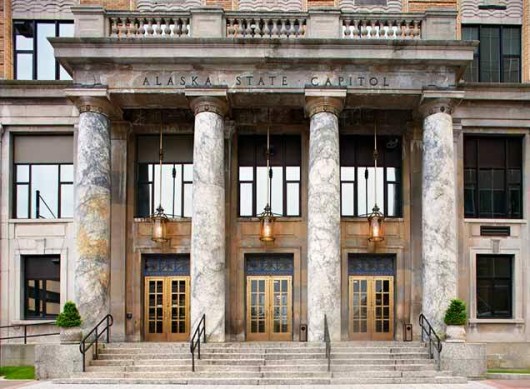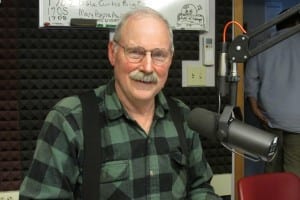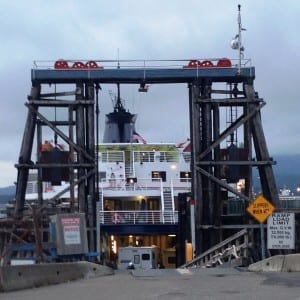State Sen. Bert Stedman was in Ketchikan last week to visit with constituents. He stopped by KRBD to talk about current topics of concern, pretty much all related to the state’s $3.5-billion budget deficit.
When the Alaska Legislature reconvenes, the main topic will be the budget. Lawmakers will have to determine how to raise revenue and cut spending. But, Stedman said, the tricky part is how to do both without creating more fiscal problems.
“When you increase taxes, that’s a suppressant,” he said. “And then if you cut back government spending, that’s also a suppressant. Now, we need to cut back our government spending. We’re not going to fix this problem without doing that, but as you add additional economic suppressants, you have to be careful to not push the economy into a recession.”
Gov. Bill Walker has released his proposed budget, which includes an income tax, various other new or raised taxes, a restructuring of the Permanent Fund Dividend program, and many spending cuts.
Stedman said the governor’s budget needs some work. He said Alaskans are willing to do their part, as long as what’s asked of them is fair. Before raising taxes on individuals, Stedman wants to see changes to the state’s oil tax structure.
“I feel strongly that that has to be on the table before we ask people around the state for all these other tax increases,” he said. “We have a net profits tax, if there’s no profit at $40-$50 a barrel of oil, why are we paying out credits in the hundreds of millions of dollars. It makes absolutely no sense.”
Stedman said the various credits in the current oil-tax structure add up to about a billion dollars.
Another area he said should be explored before taxing the public is the annual inflation-proofing appropriation for the Alaska Permanent Fund. Stedman said the state adds the equivalent of inflation back to the principal every year. But, he said, the Permanent Fund portfolio already has inflation-proofing built in.
“So, we’ve been inflation-proofing the inflation proofing. And I think it’s time that we take a look at that and have a discussion about that,” he said. “That’s about $900 million.”
So, he said, add the oil tax credits and the inflation-proofing, and you’ve got close to $2 billion of the $3.5 billion deficit.
“That gives us some breathing room,” he said.
For more breathing room, there will have to be cuts. Those cuts will be difficult, though, especially after last year’s round of deep spending cuts. Rather than chipping away at departments’ budgets, Stedman said the state should look at reducing its overall footprint, and prioritizing funding.
One state service he hopes to protect is the Alaska Marine Highway System, but Stedman said that’s going to be a challenge: “If you just count votes, we don’t have the votes.”
Stedman said he’s worried the appropriation for the Marine Highway will be cut too much, which will lead to reduced service, which will create problems for residents who depend on that mode of transportation.
“As an example, if you take the potential schedule for Sitka, which is one north one south once a week, and it’s a mainliner, it’s going to be full of summer visitors,” he said. “Good luck getting a reservation. It doesn’t work. Ketchikan is fortunate to have the shipyard and maintenance facility, they’ve got to go by Ketchikan. Wrangell, they could skip Wrangell. They could skip Petersburg a little bit. They’re not going to skip Juneau.”
The tough part will be convincing other lawmakers of the ferry system’s importance. Stedman said Southeast residents who want to help should focus on lobbying the governor’s office, not legislators from Southcentral or the Interior.
“Frankly I don’t think the Railbelt boys are going to listen,” he said. “You can write all the letters you want to. Most likely, they won’t even read them, because you’re not from their district. They shut down the Marine Highway and sent the boats to the scrapyard, their telephone won’t even ring. In fact, it might ring – someone might want some of the money to build a road.”
Another way to protect the ferry system is to build a coalition with other districts. Kodiak, for example, also has an interest in the Marine Highway, and Stedman said it could provide more weight if Southeast plays its cards right.
“There is some budget proposals that are going to hurt Kodiak in the Marine Highway, and we need Kodiak to support us in the Marine Highway,” he said. “So, we need, in turn, to help Kodiak in their discussions and requests for Marine Highway transportation. Because, without Kodiak, we lose two more votes out of the majority.”

Last year, the state started requiring drivers to have headlights on at all times on sections of highway in Southeast . (File photo)
There are some non-budget issues that Stedman plans to work on. The headlights-on-at-all-times rule for certain Southeast highways, for example.
“Man, that just gets my blood going where DOT just decides that Coastal Alaska should have to have their headlights turned on… The police have better things to do,” he said. “We have meth problems and black-tar heroin problems and domestic violence problems. We don’t need the police chasing your neighbor down the street because he forgot to turn his headlights on.”
Stedman has sponsored a bill that would reverse that state Department of Transportation decision.
Stedman said he also wants to keep the pressure on the federal government over the expanding sea-otter population, which has had an effect on shellfish in the region.
The Legislature reconvenes on Jan 19.









